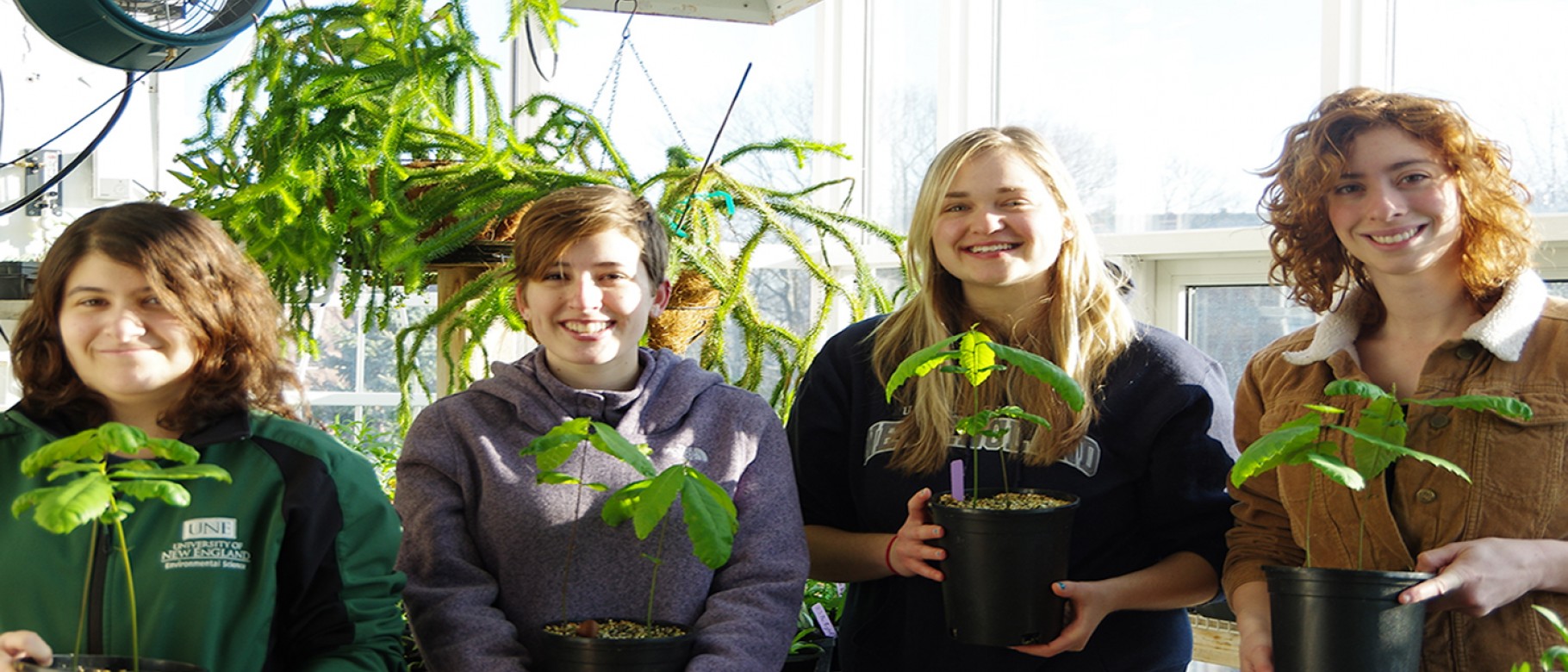UNE students to plant rare chestnut trees on campus on Earth Day in support of national restoration effort

Through a partnership with the American Chestnut Foundation, University of New England students and faculty are growing and planting American chestnut seedlings this spring. This effort is part of a series of field experiments across Maine to assist in large-scale restoration of the species throughout its former range. The American chestnut (Castenea dentata) is classified as a tree of special concern in Maine due to the devastating effects of a blight fungus accidentally imported to the east coast more than 100 years ago.
Four UNE Environmental Science students have been working to bring American chestnuts to campus as part of a senior capstone class, a course that provides hands-on learning and project management in which students work together to pool their interdisciplinary perspectives to learn and teach each other about sustainability.
The students will plant American chestnut seeds and saplings as a hands-on lab activity with Thomas Klak, Ph.D., a professor in the Department of Environmental Studies. The event, to which the public is invited, will take place from 2 to 4 p.m. on Earth Day: Friday, April 22.
"It's a fun project, and very exciting to work on,” said UNE student Kat Santarpio. “I didn't know much about American chestnuts when we started this project, but the more I learn, the more I want to go out and educate people about these trees! It's a great opportunity to teach parents and students and all of New England about their importance and resurgence.”
Fellow student Sarah Fleischmann noted, “We are trying to leave a legacy at UNE involving students, faculty and the campus community. This project is a true culmination of what I’ve learned on this campus -- the restoration of an important species, and working with important individuals from a variety of different fields and disciplines.”
In the year 1900, there were more than 4 billion American chestnut trees in the wider region of the Appalachian Mountains, from Maine to Alabama -- approximately one of every four trees in the eastern forest. The chestnut blight fungus (Cryphonectria parasitica) was accidentally introduced from Asia to America at the beginning of the 20th century, and the American chestnut became functionally extinct as a result. The fungus attacks wounds in the bark of a tree, forms cankers, and eventually girdles the tree, killing all but the root system.
The American Chestnut Foundation was founded in 1983 and has been working to not only restore the American Chestnut to its native range, but to begin the construction of a model for the restoration of other native trees and plants. According to the foundation, the American chestnut was once important in the landscape as a nutritious food for humans and animals and as a source of attractive, light-weight, rot-resistant wood.